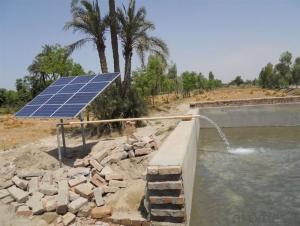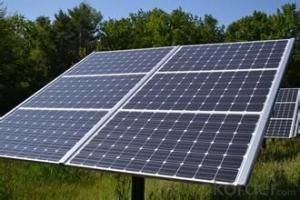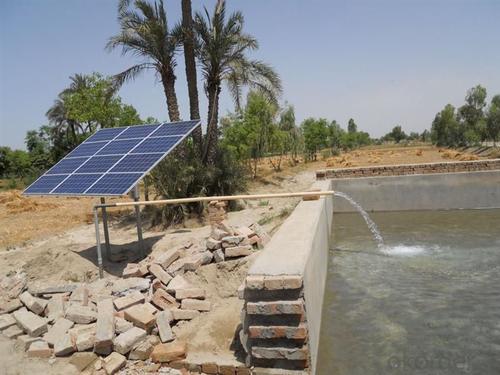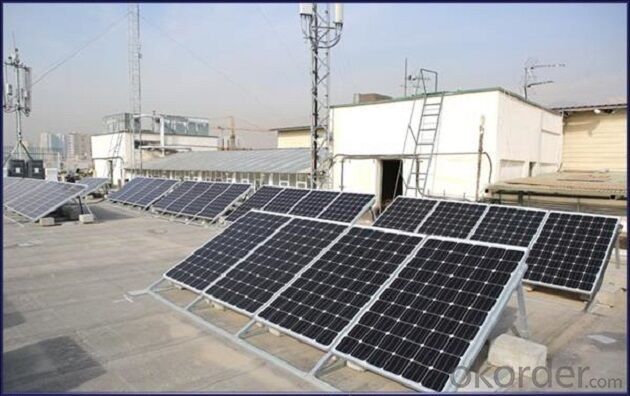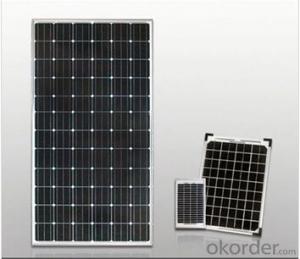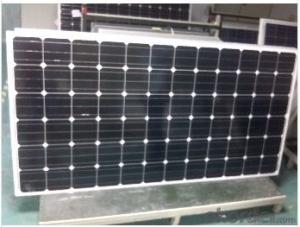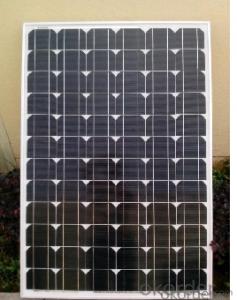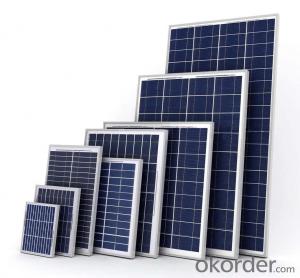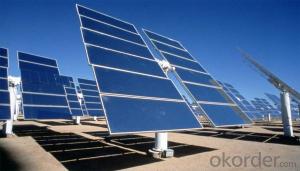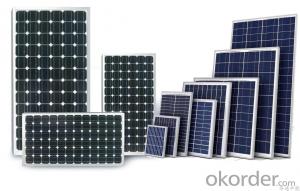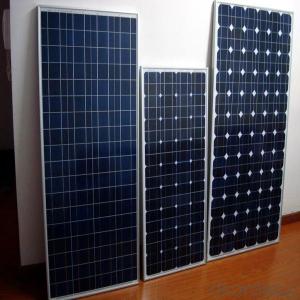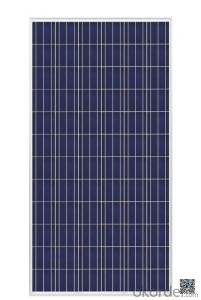XL Solar Panels 265W High Efficiency Poly PV Solar Panels
- Loading Port:
- China main port
- Payment Terms:
- TT OR LC
- Min Order Qty:
- 250 watt
- Supply Capability:
- 2500000 watt/month
OKorder Service Pledge
OKorder Financial Service
You Might Also Like
1.Product Description
We Offer the mono solar panels 250W, 255W, 260W 300W, poly solar panels 250W 260W 300W. You can find different mono solar panels and poly solar panels . We are the professional solar panels solar modules supplier.
Solar panels or modules use light energy (photons) from the sun to generate electricity through the photovoltaic effect. The majority of solar panels or modules use wafer-based crystalline silicon cells or thin-film cells based on cadmium telluride or silicon.
Solar panels constitute the solar array of a photovoltaic system that generates and supplies solar electricity in commercial and residential applications. Each solar panel or module is rated by its DC output power under standard test conditions, and typically ranges from 100w to 320 watts. Ground mounted photovoltaic system are usually large, utility-scale solar power plants. Their solar panels or modules are held in place by racks or frames that are attached to ground based mounting supports.
2.Technical Parameter
Model Type | |
Peak Power-Pmax(W) | 185 |
Open Circuit Voltage-Voc(V) | 44.2 |
Maximum Power Voltage-Vmp(V) | 36 |
Short Circuit Current-Isc(A) | 5.4 |
Maximum Power Current-Imp(A) | 5 |
Maximum System Voltage | 1000V DC |
Maximum Series Fuse Rating | 10A |
Power Tolerance | -1~+3% |
Temperature Coefficients of Pmax | -0.45%/℃ |
Temperature Coefficients of Voc | -0.348%/℃ |
Temperature Coefficients of Isc | 0.031%/℃ |
Nominal Operating Cell Temperature | 44.5±2℃ |
Standard Testing Condition(STC) | Irradiance:1000W/m²;Temperature:25℃;AM=1.5 |
Qualification Test Parameters | |
Operating Temperature | -40℃~+85℃ |
Storage Temperature | -40℃~+85℃ |
Pressure Bearing | ≥5400Pascal/m² |
Wind Bearing | ≥5400Pascal/m² |
Mechanical Characteristics | |
Cell Size | Mono 125*125mm±0.5 |
No.of Cells | 72pcs(6*12) |
Dimension | 1580*808*40mm |
Weight | 15.5Kg |
Glass | 3.2mm High Transmission,Low Iron |
Frame | Anodized Aluminum Alloy |
Junction Box | IP65Rated |
Internal Diodes | 3 Bypass Diodes |
Cable | 1*4.0mm² Length 900mm |
3.Production Flow
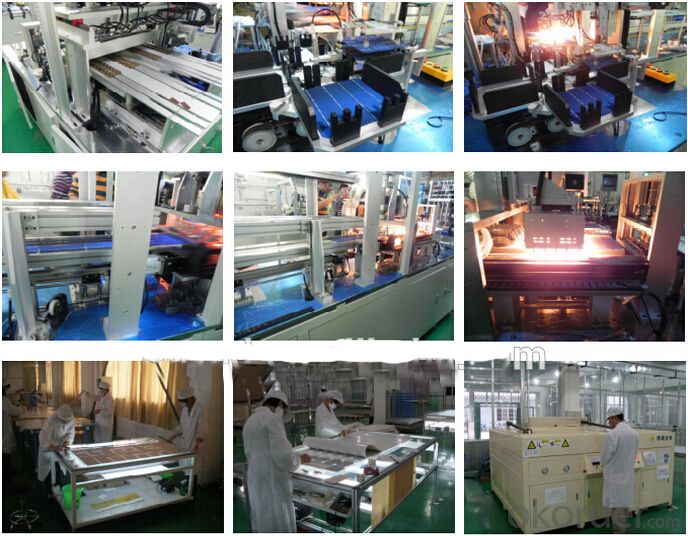
4. Use For
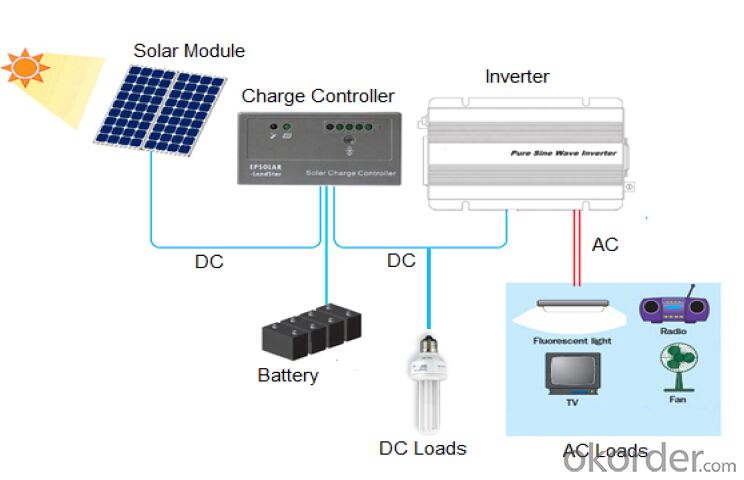
5. Pictures of Product
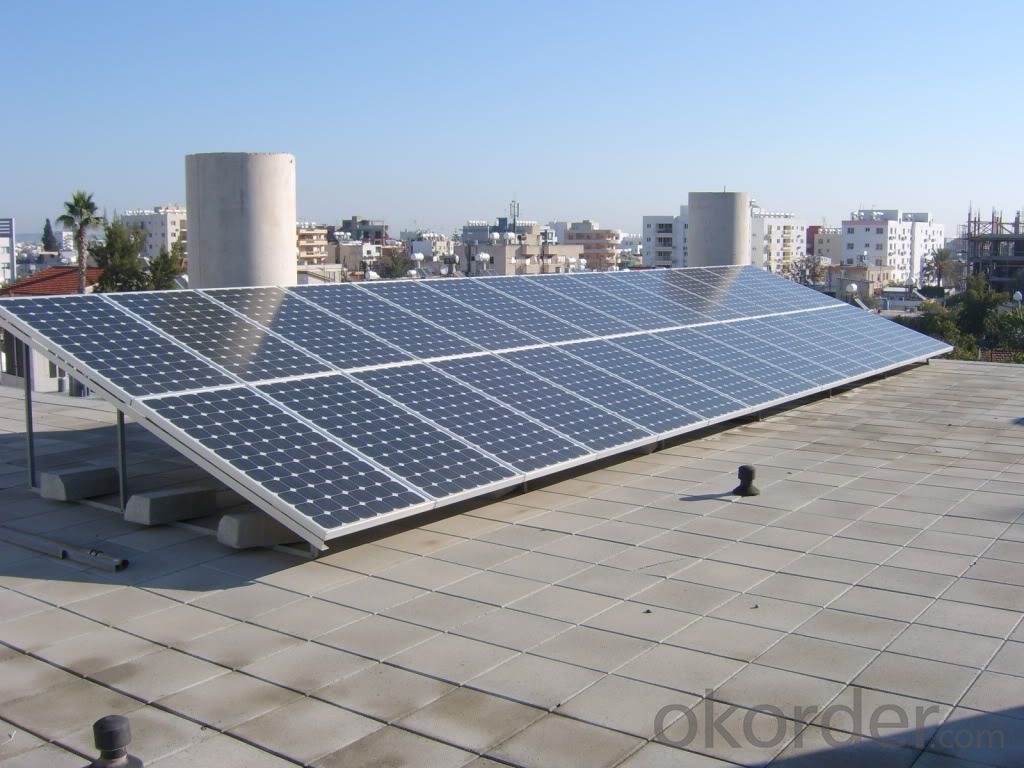
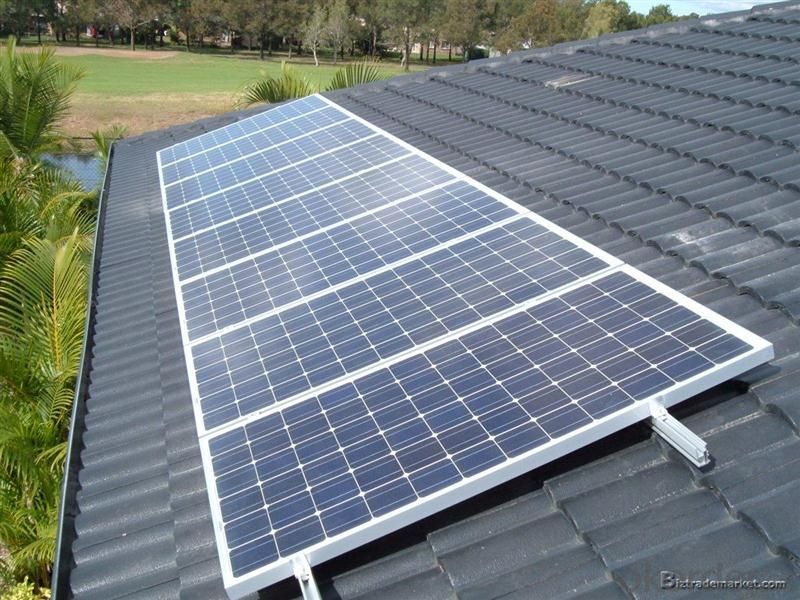
6.FAQ
We have organized several common questions for our clients,may help you sincerely:
1). What’s price per watt?
A: It’s depends on the quantity, delivery date and payment terms of the order. We can talk further about the detail price issue. Our products is high quality with lower price level.
2). Can you tell me the parameter of your solar panels?
We have different series of cells with different power output, both from c-si to a-si. Please take our specification sheet for your reference.
3). How do you pack your products?
We have rich experience on how to pack the panels to make sure the safety on shipment when it arrives at the destination.
4).Can you do OEM for us?
Yes, we can.
- Q: Can solar panels be used in areas with high levels of sand or dust deposition?
- Yes, solar panels can be used in areas with high levels of sand or dust deposition. However, regular cleaning and maintenance of the panels may be required to ensure optimal performance.
- Q: Can solar panels be used for powering remote monitoring systems?
- Yes, solar panels can be used to power remote monitoring systems. Solar panels generate electricity from sunlight and can charge batteries or directly power devices. This renewable energy source is ideal for remote locations where access to the electrical grid is limited or unavailable. Solar panels can provide a reliable and sustainable power solution for remote monitoring systems, ensuring continuous operation without the need for frequent battery replacement or reliance on fossil fuels.
- Q: Can solar panels be used to power a military vehicle?
- Yes, solar panels can be used to power a military vehicle. Advances in technology have allowed for the development of lightweight and flexible solar panels that can be integrated into the structure of military vehicles. These solar panels can capture sunlight and convert it into electrical energy to power various systems and reduce reliance on traditional fuel sources. Implementing solar panels can enhance the sustainability and operational efficiency of military vehicles in certain scenarios.
- Q: How do I choose the right size of solar panels for my home?
- To choose the right size of solar panels for your home, you need to consider the available roof space, your energy consumption, and your budget. First, assess the area on your roof that can accommodate solar panels and determine its orientation and shading. Then, calculate your average monthly electricity usage to estimate the system size required to meet your needs. Lastly, take your budget into account and consider the cost-effectiveness of different panel sizes. Consulting with a solar professional can also provide valuable guidance in determining the right size for your specific requirements.
- Q: What is the impact of roof age on solar panels' efficiency?
- The age of a roof can have a significant impact on the efficiency of solar panels. An older roof may have deteriorated shingles or structural issues that can affect the installation and performance of solar panels. Additionally, an older roof may require repair or replacement in the near future, which would require removing and reinstalling the solar panels, incurring additional costs and potential damage. Therefore, it is important to ensure that the roof is in good condition before installing solar panels to maximize their efficiency and longevity.
- Q: Which kit did you use?How easy was it to build? How much did it cost to build the panels?How many kw or watts does it produce?Any other info on the kit or panels you built would be helpful.Thanks!
- I am starting to think about solar panels as an option for my home. I have d fef one some research on panels, to be honest its all very confusing. There are many.???Read more...
- Q: How do solar panels affect the homeowner's insurance policy?
- Solar panels can affect a homeowner's insurance policy by potentially increasing the coverage limits and premiums. Since solar panels are considered an additional asset and may increase the replacement cost of the home, insurance companies may require homeowners to adjust their coverage accordingly. Additionally, the liability coverage may need to be increased to protect against any potential damages or injuries related to the solar panel system. It's advisable for homeowners to contact their insurance provider to discuss the specific impact on their policy.
- Q: How do solar panels affect the property's community engagement?
- Solar panels can have a positive impact on a property's community engagement by promoting sustainable practices and sparking conversations about renewable energy. Solar panels serve as a visible symbol of a property's commitment to reducing carbon emissions and reliance on fossil fuels, which can inspire and encourage others in the community to adopt similar eco-friendly practices. Additionally, solar panels can be used as an educational tool, offering opportunities for community members to learn about solar energy and its benefits, fostering a sense of environmental awareness and collective action.
- Q: Can solar panels be used to power a sports stadium?
- Yes, solar panels can be used to power a sports stadium. By installing a sufficient number of solar panels on the roof or in nearby areas, a sports stadium can generate renewable energy to meet its electricity needs. This can help reduce reliance on traditional energy sources, lower operating costs, and contribute to a more sustainable and environmentally friendly venue.
- Q: Can solar panels be installed on golf courses or recreational facilities?
- Yes, solar panels can be installed on golf courses or recreational facilities. These locations often have vast open spaces with ample sunlight, making them ideal for harnessing solar energy. Additionally, installing solar panels in these areas can help offset the energy demands of the facilities, reduce carbon emissions, and promote sustainability.
Send your message to us
XL Solar Panels 265W High Efficiency Poly PV Solar Panels
- Loading Port:
- China main port
- Payment Terms:
- TT OR LC
- Min Order Qty:
- 250 watt
- Supply Capability:
- 2500000 watt/month
OKorder Service Pledge
OKorder Financial Service
Similar products
Hot products
Hot Searches
Related keywords
